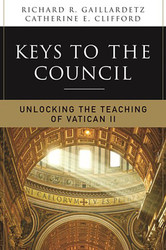Lourdes and Fatima, war, Vatican I and II, Fulton Sheen, St. John Paul II, and the clerical sex abuse crisis: These are just a few of the people and events that helped define the Catholic Church in the modern era, the period between 1846 and 2005.
The call to live the fullness of our faith has not changed since the time of the first disciples, but in The Church and the Modern Era (1846–2005), author David Wagner explores how the Catholic Church met the challenges of the industrial age, world wars, the sexual revolution, and technological advancement in an increasingly secular world.
The “modern era” of the Catholic Church began with the election of Blessed Pius IX in 1846 and ends with the death of St. John Paul II in 2005, the last pope to have served as a council father at Vatican II. With monarchies falling, nation-states rising, and industrialization and mass migration underway, the world in which we live changed more during this period than any other, David Wagner contends. While the Church may feel more user-friendly and less formal than ever before, what we believe has been handed down from the beginning.
Wagner will reintroduce you to some of the era’s most powerful examples of virtue and faith such as St. John Henry Newman, St. Thérèse of Lisieux, St. Josephine Bakhita, St. Faustina, and St. Maximillian Kolbe. He will also dispel some of the long-held misconceptions about the Church that span the 160-year period.
In The Church and the Modern Era, you will learn:
- The Catholic Church is the world’s most powerful advocate for workers, the poor, and human rights.
- The Church’s social teaching does not endorse any economic or political systems.
- The Second Vatican Council did not change Catholic teaching on faith or morals.
- The Church’s teaching on human sexuality is the real sexual revolution.
- The Church has been an advocate for raising the status of women, championing women’s rights to education, to work, and to equal pay.
The Church and the Modern Era includes a map and chronology.
Books in the Reclaiming Catholic History series, edited by Mike Aquilina and written by leading authors and historians, bring Church history to life, debunking the myths one era at a time. This volume includes a series epilogue by Aquilina that examines the decades since the death of St. John Paul II and provides a look ahead.
Product Preview
| Format: | Paperback book |
|---|---|
| Product code: | AM717871 |
| Dimensions: | 6" x 9" |
| Length: | 192 pages |
| Publisher: |
Ave Maria Press
|
| ISBN: | 9781594717871 |
| 1-2 copies | $15.79 each |
|---|---|
| 3-9 copies | $15.07 each |
| 10-49 copies | $14.36 each |
| 50-99 copies | $14.00 each |
| 100+ copies | $13.46 each |
Praise
“Richly documented, immensely informative, and engagingly written, David Wagner’s The Church and the Modern Era (1846–2005) traces the story of Catholicism from the pontificate of Blessed Pius IX through the pontificate of St. John Paul II. These were the peak years of the Modern Era, when the explosive growth of scientific knowledge and technological proficiency vastly expanded the human capacity for both good and evil, while millions celebrated freedom even as they fell prey to the dictatorship of relativism. This book offers an illuminating introduction to a crucial period in which the Church faced the challenge of announcing the Good News of Jesus Christ to a befuddled world.”
“Telling the stories of the popes who shaped history in the modern world in The Church and the Modern Era (1846–2005), Wagner gives the reader a whirlwind tour through the encyclicals, political battles, and spiritual struggles of the successors of St. Peter. This is a book every Catholic should read, reflect on, and utilize in understanding the Catholic Church in the modern era.”
“Between the election of Pope Pius IX in 1846 and the death of Pope St. John Paul II in 2005 the Church held two Vatican councils and witnessed two world wars, the rise of totalitarianism, and the sexual revolution. The same tumultuous period produced saints such as Thérèse of Lisieux, Maximilian Kolbe, and Mother Teresa of Kolkata. This well-researched, intelligently organized, reader-friendly guide makes sense of it all.”
“Learning about the Church’s place in modern history is an incredibly fascinating endeavor and David Wagner has brought it to the popular level in his book The Church and the Modern Era (1846–2005). By effortlessly weaving the facts of history with the stories of incredible saints who lived through the events themselves, Wagner has given all of us a beautiful opportunity to delve into modern history from a Catholic perspective.”








